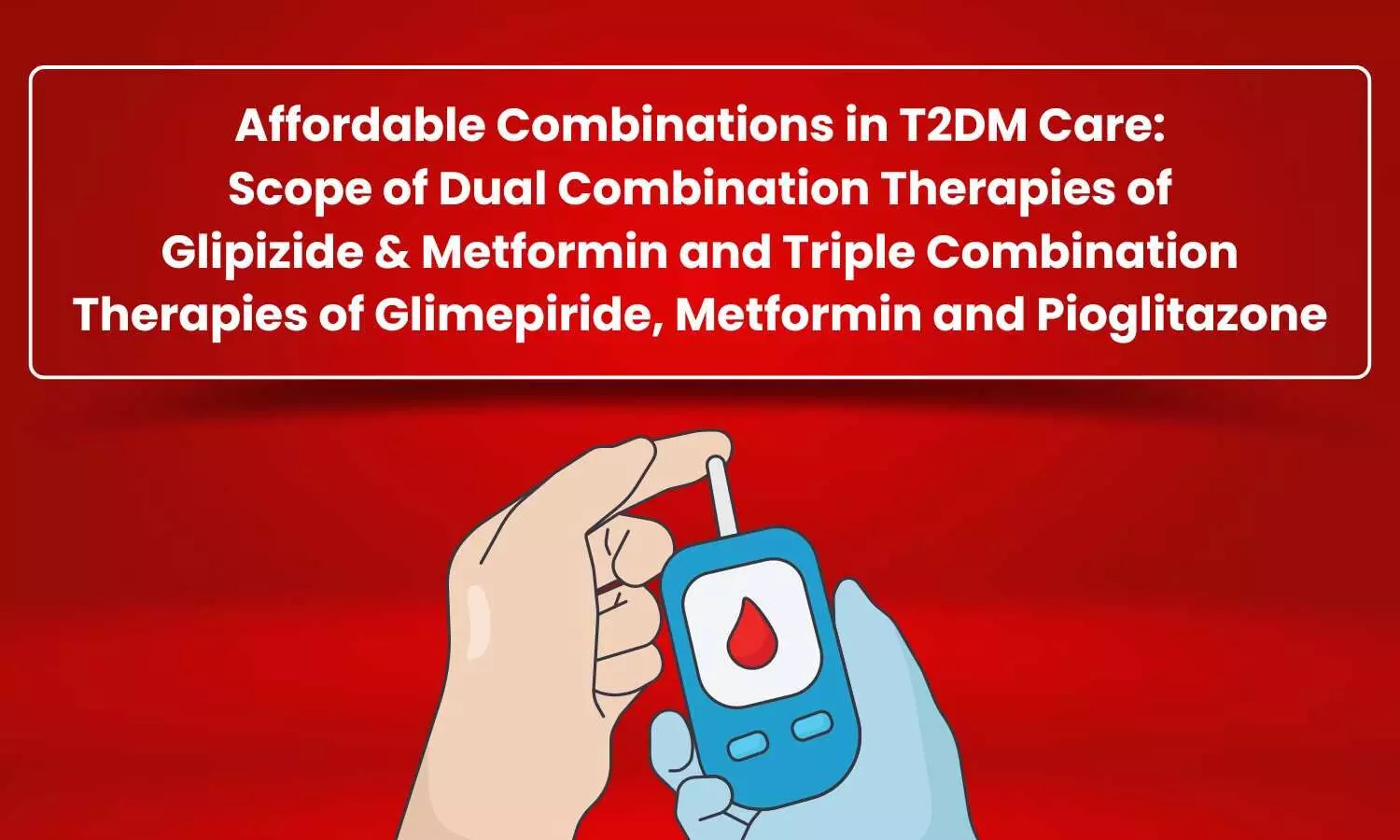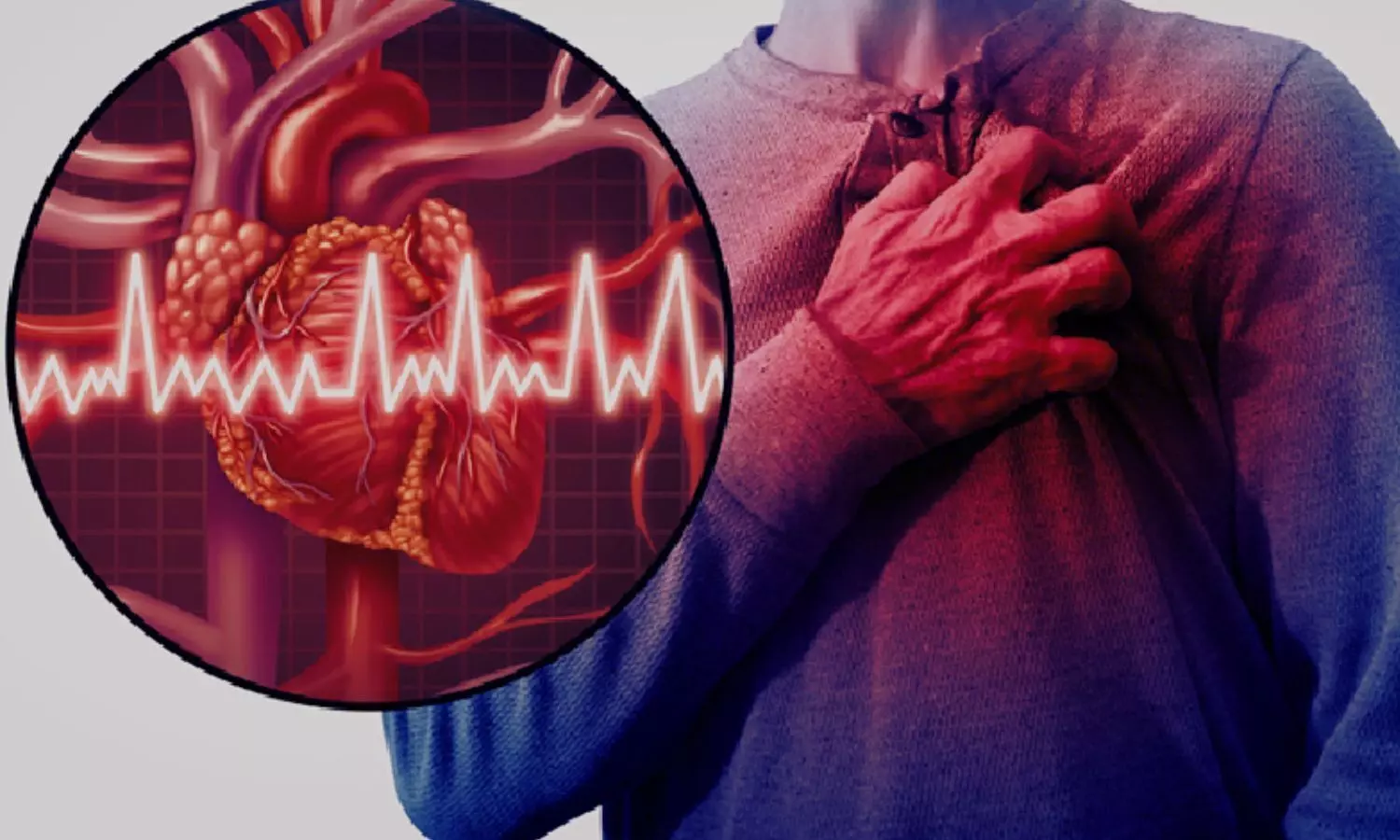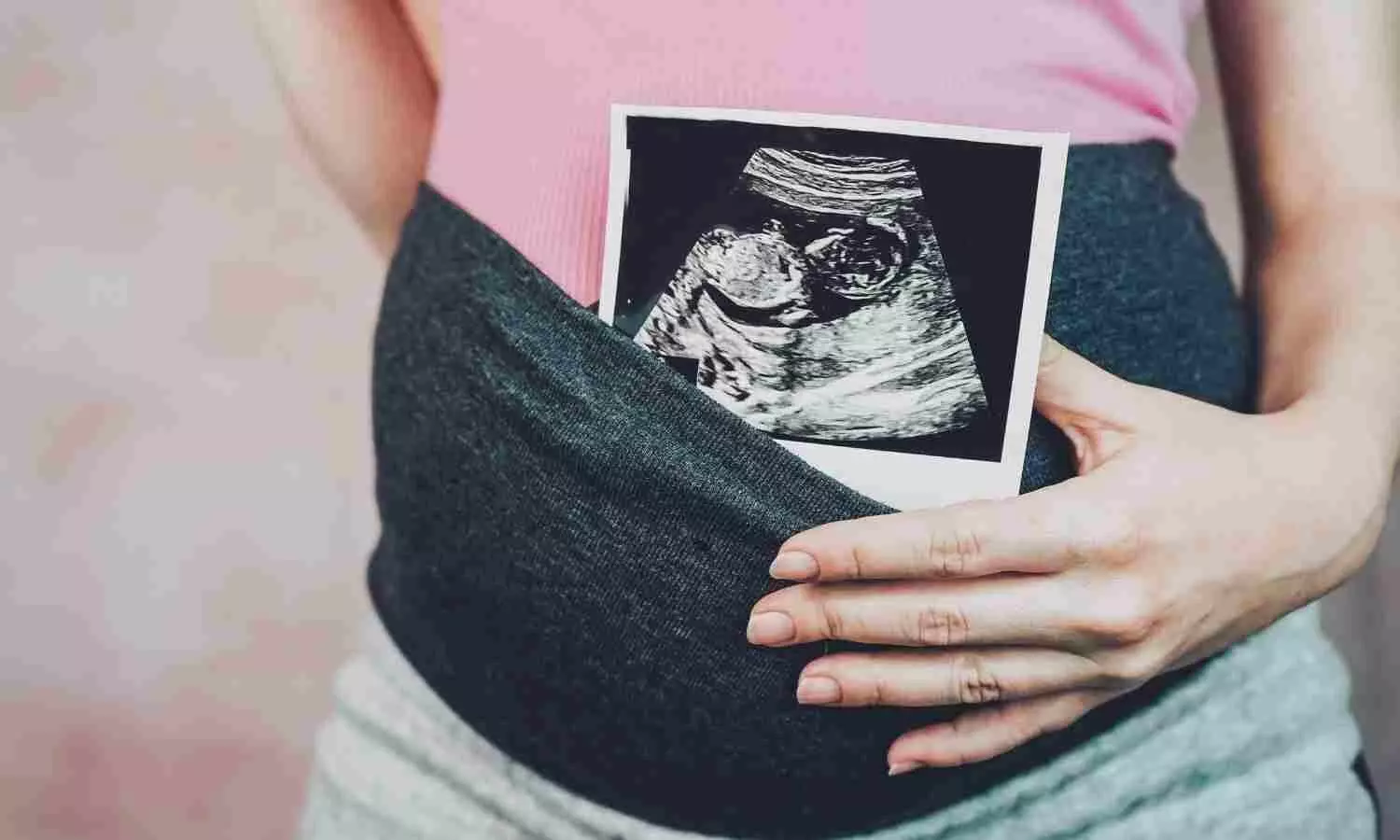Gallbladder cancer rises among Black Americans as cases decline in other groups
Powered by WPeMatico
Powered by WPeMatico
Powered by WPeMatico
Powered by WPeMatico
Powered by WPeMatico
Powered by WPeMatico

Dual therapy of Glipizide + Metformin and the triple drug combination of Glimepiride + Metformin + Pioglitazone emerges as effective, safe, and affordable options for achieving glycemic control in the management of type 2 diabetes mellitus (T2DM), a latest review article concluded.
This article authored by Indian doctors has been published in the May 2024 edition of Cureus, a wing of the Springer Nature Journal.
The review emphasized that efficient T2DM management relies on cost-effective interventions to improve patient adherence.
Here are key highlights from this paper:
1) The combination of Glipizide and Metformin is effective in achieving optimal glycemic control, among T2DM patients with aberrant glycemic variables over three months despite metformin monotherapy
2) A triple-dose combination of Glimepiride, Metformin, and Pioglitazone has shown significant effectiveness in glycemic control, with an HbA1c level decrease by 1.3%. The combination has been proven in the Indian population to provide good glycemic goals and lipid levels.
Adapted from
1) Shaikh S, Vaidya V, Gupta A, et al. (May 07, 2024) A Review on Affordable Combinations in Type 2 Diabetes Care: Exploring the Cost-Effective Potential of Glipizide + Metformin and Glimepiride + Metformin + Pioglitazone. Cureus 16(5): e59850. doi:10.7759/cureus.59850
Powered by WPeMatico

New Delhi: The Delhi Police arrested a man while undergoing an echocardiogram at the All India Institute of Medical Sciences (AIIMS) Delhi on Friday for allegedly impersonating Hari Om Rai, the former managing director of Lava International, who is an accused in a money laundering case involving Chinese smartphone-maker Vivo-India and others.
According to officials, the impersonator was detained while undergoing an echocardiogram at the medical institute under Rai’s name.
The Enforcement Directorate (ED) had sought from the Delhi Police registration of FIR against Hari Om Rai and his son Pranay Rai, Ram and a few others on Thursday. The alleged impersonator was placed under arrest on Friday, news agency PTI reported.
Also Read:2 senior cardiologists at RML Hospital arrested by CBI in bribery case
Hari Om Rai had been arrested by the ED in October last year on money laundering charges and was granted three-month medical bail by the Delhi High Court in February due to cardiac issues. Rai had recently applied for an extension of his medical bail, leading the court to order a cardiac health examination at AIIMS.
On Thursday, a team of ED officials arrived at AIIMS to oversee Rai’s medical examination. Despite several emails, Rai did not appear until 1 PM. His son informed the officials that Rai was unwell and would arrive soon. However, ED officials and AIIMS staff discovered Naval Kishor Ram undergoing an examination using Rai’s court-issued documents.
A source told PTI that a team of ED officials had reached AIIMS on Thursday to supervise the medical examination of Hari Om Rai. He, however, did not appear till 1 pm even as three emails were sent to him during this period.
His son told ED officials waiting at AIIMS that Hari Om Rai was “unwell” and would reach the hospital “as soon as possible”, the source said.
Faced with non-cooperation, the source said, ED officials and AIIMS staff reached the cardiology ECHO lab where they were “shocked” to find another person being examined by a doctor on duty in Hari Om Rai’s name and using court-issued documents.
The man, later identified as Naval Kishor Ram, “initially claimed” to be Hari Om Rai but on subsequent questioning disclosed his real name to the ED officials.
He (Ram) said he was instructed by a doctor at a private health facility, Vasant Health Centre, to take the high court’s documents meant for Hari Om Rai and original medical records, and get “free treatment” for himself in Rai’s name.
Ram and his nephew were detained by the agency at AIIMS and subsequently, his personal search was conducted and a ‘panchnama’ was prepared.
“He (Ram) was instructed to tell his name as Hari Om Rai,” the ED officials informed police through the FIR in the case.
The ED charged Hari Om Rai, Ram and others on the charge of “criminal conspiracy” and handed over Ram to police, which arrested him on Friday.
Ram informed the ED officials that he had done a similar check-up in Hari Om Rai’s name on May 8 and that on Thursday, the former MD’s associate Chandrasekhar Rai brought him for a fresh checkup at AIIMS.
The ED found Hari Om Rai also “arranged” for Ram to undergo a CT coronary angiogram at a private diagnostic clinic on March 5 and the report “falsely” attributed the cardiac findings to Hari Om Rai.
The agency informed the high court on Thursday about the alleged impersonation and cheating, following which Hari Om Rai was refused extension of bail and was sent to Tihar jail under judicial custody.
The police FIR includes charges under sections 419 (cheating by personation), 420 (cheating), 464 (making false document), 468 (forgery), 471 (using as genuine a forged document), and 120B (criminal conspiracy).
Powered by WPeMatico

USA: In a groundbreaking development in the realm of cardiovascular health, a recent study has shed light on a significant association between serum lipoprotein(a) levels, non-alcoholic fatty liver disease (NAFLD), and the risk of non-fatal myocardial infarction (heart attack) in individuals with diabetes mellitus. Conducted by a team of researchers from prominent institutions, the findings offer crucial insights into the complex interplay of metabolic factors contributing to cardiovascular complications in diabetic patients.
The retrospective study, using data from the National Health and Nutrition Examination Survey (NHANES) III, revealed that individuals with diabetes were more likely to report a history of myocardial infarction (MI) if they also had high levels of serum lipoprotein(a), or Lp(a), or advanced liver fibrosis.
“Multivariate analysis showed that the risk for a non-fatal MI more than doubled when levels reached 50 mg/dL, a level that current guidelines consider to be elevated, and beyond, compared with diabetes patients with the lowest Lp(a) levels (<10 mg/dL),” Avica Atri, MD, of Jefferson Einstein Hospital in Philadelphia, reported at the annual American Association of Clinical Endocrinology (AACE).
As well, advanced liver fibrosis associated with NAFLD was linked with a 70% higher risk for a non-fatal MI (aOR 1.70).
Patients who self-reported a history of myocardial infarction had higher Lp(a) levels than those who did not report an MI (mean 30.7 versus 24.2 mg/dL, respectively) and were more likely to have advanced liver fibrosis (13.5% versus 4.5%).
The patients with advanced liver fibrosis tended to have lower mean Lp(a) levels versus those without advanced fibrosis (13.6 versus 25.9 mg/dL), even among the subset with a prior MI (8.6 versus 34.2 mg/dL).
Diabetes mellitus, a chronic metabolic disorder characterized by elevated blood sugar levels, is known to significantly increase the risk of cardiovascular diseases, including myocardial infarction. However, the specific mechanisms underlying this heightened risk have remained a subject of extensive research.
Lp(a) is produced by the liver circulating levels in the body are determined by genetics. It is an established independent risk factor for atherosclerotic cardiovascular disease (ASCVD). Growing evidence suggests NAFLD is linked with heart disease as well, the relationship between Lp(a), NAFLD, and the MI risk has not been studied well in patients with diabetes mellitus.
The cross-sectional analysis presented by Atri included a weighted sample of 3,330,795 people with diabetes ages 35 and older from the NHANES III database (1988 to 1994) who had Lp(a) data collected.
The mean participants’ age was 62 years; 59% were women, and the median HbA1c was 7.7%. Non-fatal MI prevalence was 13.3%. 18% of patients met the criteria for advanced liver fibrosis associated with NAFLD (a score of 2.67 on the Fibrosis-4 scale).
A higher proportion of patients in the MI group had lipoprotein (a) levels over 50 mg/dL (about 30% versus 19% in those without an MI).
The study’s limitations included its cross-sectional nature and that because it is based on interviews, there is a possibility of recall bias. Furthermore, given the study design, fatal MIs could not be assessed for an association with Lp(a) or advanced liver fibrosis.
Reference:
Atri A “Association between serum lipoprotein(a), NAFLD and risk of non-fatal myocardial infarction in individuals with diabetes mellitus” AACE 2024.
Powered by WPeMatico

A recent study published in the recent issue of BMC Infectious Diseases looked into the post-market safety profiles of two commonly prescribed antiviral drugs, the Oseltamivir and Baloxavir Marboxil against seasonal influenza. Given their comparable efficacy, this analysis provided essential clinical references by exploring adverse events (AEs) linked with these medications.
The study meticulously analyzed data from the FDA Adverse Event Reporting System (FAERS) and covered reports from the first quarter of 2004 to the fourth quarter of 2022. This study utilized advanced data mining techniques like the reporting odds ratio (ROR), proportional reporting ratio, Bayesian Confidence Propagation Neural Network and Multiple Gamma Poisson Shrinkage to examine AEs linked to both Oseltamivir and Baloxavir Marboxil. A Venn analysis was also conducted to compare and identify specific AEs associated with each drug. The analysis incorporated data from a total of 15,104 Oseltamivir cases and a total of 1,594 Baloxavir Marboxil cases. This revealed 21 common AEs affecting various domains including neurological, psychiatric, gastrointestinal, dermatological, respiratory and infectious systems.
Oseltamivir was associated with 221 significantly specific AEs. Few notable examples include appendicolith (ROR 459.53), infantile acne (ROR 368.65), acute macular neuroretinopathy (ROR 294.92), proctitis (ROR 245.74) and senile purpura (ROR 154.02). The medical events (DMEs) linked to Oseltamivir included fulminant hepatitis (ROR 12.12, n=27), ventricular fibrillation (ROR 7.68, n=64) and toxic epidermal necrolysis (ROR 7.21, n=75). Baloxavir Marboxil expressed 34 specific AEs, including melaena (ROR 21.34, n=23), hemorrhagic cystitis (ROR 20.22, n=4), paralytic ileus (ROR 18.57, n=3), and hemorrhagic diathesis (ROR 16.86, n=3). DMEs related to Baloxavir Marboxil included rhabdomyolysis (ROR 15.50, n=26).
The study highlighted the need for careful monitoring of fulminant hepatitis during Oseltamivir treatment in patients with pre-existing liver conditions. The potential for Oseltamivir to induce abnormal behavior in adolescents, also warrants close observation. But, Baloxavir Marboxil emerges as a potential alternative for patients with liver issues due to its lower hepatic toxicity. The risk of rhabdomyolysis during Baloxavir Marboxil treatment points towards careful monitoring of relevant indicators in symptomatic patients. Overall, this comprehensive data will help equip clinicians with valuable insights to enhance the existing understanding of the safety profiles of these influenza treatments in real-world settings.
Source:
Li, Y., Wang, X., Liao, Y., Zeng, Y., Lin, W., & Zhuang, W. (2024). Safety analysis of Oseltamivir and Baloxavir Marboxil after market approval: a pharmacovigilance study based on the FDA adverse event reporting system. In BMC Infectious Diseases (Vol. 24, Issue 1). Springer Science and Business Media LLC. https://doi.org/10.1186/s12879-024-09339-4
Powered by WPeMatico

A recent cohort study highlights the complex effects of the COVID-19 pandemic on perinatal health by distinguishing the impacts of individual SARS-CoV-2 infection from broader societal changes during the pandemic period. The findings published in the Journal of American Medical Association offer better understanding of how the pandemic has influenced birth parent and infant health outcomes.
The study examined live births from April to December of each year and the categorized participants into three groups: 2020 birth parents with SARS-CoV-2 infection, 2020 birth parents without infection and 2019 prepandemic birth parents. This research investigated the outcomes including preterm birth (PTB), hypertensive disorders of pregnancy (HDP), gestational diabetes (GD) and severe maternal morbidity (SMM).
The key findings indicate that SARS-CoV-2 infection in 2020 birth parents was associated with increased risks of PTB, HDP and SMM. Also, the risk difference (RD) for PTB was 2.8% (95% CI, 2.1%-3.5%), for HDP 3.3% (95% CI, 2.4%-4.1%) and for SMM 2.3% (95% CI, 1.9%-2.7%) when compared to 2020 birth parents without the infection. This illuminates the significant health burdens imposed by the virus on pregnant individuals.
The broader COVID-19 pandemic period also had significant effects, separate from individual infections. When compared to the prepandemic group in 2019, 2020 birth parents without SARS-CoV-2 infection underwent a slight reduction in PTB rates (RD, −0.4% [−0.6% to −0.3%]), particularly spontaneous PTB. This reduction is believed to be influenced by socioenvironmental changes such as reduced commuting and lower exposure to non-COVID-19 infections. There was an increase in HDP (RD, 1.1% [95% CI, 0.9% to 1.2%]) and GD (RD, 0.9% [0.8%-1.1%]), likely due to pandemic-related stress and altered prenatal care practices.
These findings align with previous research documenting adverse perinatal outcomes associated with SARS-CoV-2 infection, but it uniquely separates these effects from those attributable to the pandemic environment. This differentiation provides valuable insights into the varied impacts on perinatal health and elucidates the need for targeted interventions.
The outcomes of the study suggest that the decrease in PTB during the pandemic may reflect beneficial lifestyle changes and reduced exposure to infections other than COVID-19. Also, the rise in HDP and GD could be tied to elevated stress levels and the limitations of remote prenatal care during lockdowns and social distancing measures. This research contributes significantly to the understanding of multifaceted impact of COVID-19 on perinatal health.
Source:
Jung, S., Liu, E. F., Goin, D. E., Rudolph, K. E., Mujahid, M. S., Dow, W. H., & Ahern, J. (2024). The COVID-19 Pandemic Period, SARS-CoV-2 Infection, and Perinatal Health. In JAMA Network Open (Vol. 7, Issue 5, p. e2410696). American Medical Association (AMA). https://doi.org/10.1001/jamanetworkopen.2024.10696
Powered by WPeMatico
